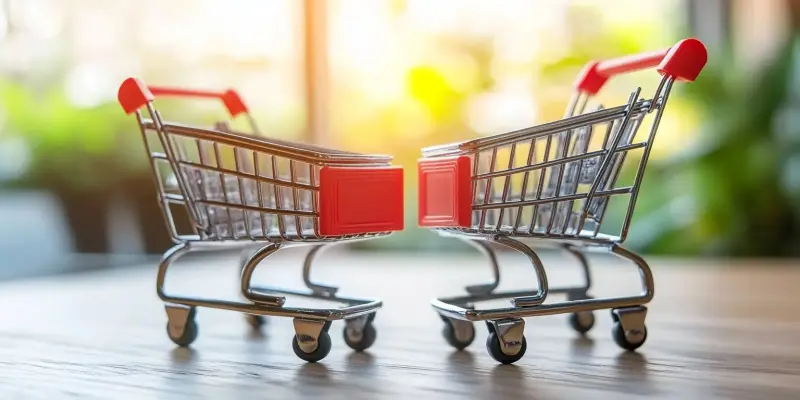The B2B ecommerce landscape is poised for significant transformation by 2025, driven largely by technological advancements and evolving customer behaviors. As the market continues to grow and develop, businesses will need to adapt to new methods of buying and selling to remain competitive and meet the increasing demands of B2B buyers. This era will see a shift in the way companies approach ecommerce, with artificial intelligence (AI), personalization, and the rise of marketplaces playing key roles in shaping the future.
The Disconnect Between B2B Sellers and Buyers
One of the prominent challenges in B2B ecommerce is the existing disconnect between sellers and buyers. This disconnect leads to mutual frustration, with buyers often dissatisfied with the purchasing process and sellers struggling to address their concerns. Outdated or siloed systems contribute significantly to this divide. These systems fail to meet the dynamic requirements of the B2B environment, lacking the capacity to offer personalized experiences or self-service options that are increasingly in demand by buyers.
Customized pricing is one of the critical pain points, with only about half of B2B sellers currently offering this option online. This presents a clear opportunity for businesses to leverage AI-infused solutions to enhance personalization and streamline processes. A shift toward more integrated, adaptive systems is necessary to bridge this gap, improving both buyer satisfaction and seller efficiency. By implementing new technologies and systems, businesses can create a more seamless and personalized ecommerce experience for their customers.
The Rise of Personalization in B2B Ecommerce
The B2B ecommerce market is projected to grow at a rate of 18% globally through 2030, driven by the adoption of integrated enterprise systems like Enterprise Resource Planning (ERP). ERPs streamline workflows, improve connectivity, and provide consistent access to information across departments. Despite these advancements, approximately 46% of businesses still struggle with providing personalized online pricing based on customer-specific terms. This inability to offer customized experiences can negatively impact a company’s bottom line if not addressed.
The demand for personalized experiences in B2B ecommerce is growing, and businesses must adapt to meet these expectations to stay competitive. By enhancing personalization, companies can deliver tailored solutions that meet the unique needs of their customers. This requires investing in new technologies and adopting more flexible, responsive systems that can adjust to individual buyer preferences. Personalization is no longer a luxury but a necessity for businesses looking to succeed in the evolving B2B market.
AI-Driven Predictive Automation
AI’s role in B2B ecommerce is evolving beyond basic data analysis and automation. It is becoming a powerful tool for predictive analytics and personalization, essential for enhancing the buyer’s experience and supporting strategic decision-making. Businesses that have not yet implemented AI solutions will need to catch up, as these technologies are crucial for staying competitive in the modern market. AI applications range from inventory management and logistics cost reduction to the automation of pricing configurations, streamlining the quote-to-cash process, and freeing up sales teams to focus on closing deals.
By leveraging AI-driven predictive automation, businesses can drive growth and efficiency in their B2B transactions. This technology can help companies anticipate customer needs, make more informed decisions, and optimize their operations. The ability to predict trends, manage resources effectively, and deliver personalized experiences will set successful businesses apart in the coming years. AI is not just a tool for operational efficiency; it is a strategic asset that can transform the way companies interact with their customers and manage their ecommerce processes.
The Emergence of Hybrid Buying Models
In the realm of B2B ecommerce, convenience, ease, and a trouble-free experience are paramount for buyers. While self-service options are increasingly popular, there remains a significant demand for sales-assisted purchasing, especially for more complex transactions. A hybrid buying model, combining self-service and sales-assisted interactions, allows vendors to adapt to varying buyer preferences. This trend highlights the importance of integrating both B2C and B2B ecommerce interactions seamlessly, providing flexibility for customers to seek assistance when needed and enhancing the overall buying experience.
Hybrid buying models cater to the diverse needs of B2B buyers, offering a balance between independent online purchasing and personalized support from sales representatives. This approach can help businesses build stronger relationships with their customers, improving satisfaction and loyalty. By embracing hybrid buying models, companies can create a more dynamic and responsive ecommerce environment that meets the needs of all types of buyers, ensuring a more comprehensive and satisfying purchasing experience.
The Mainstream Adoption of B2B Marketplaces
The B2B ecommerce landscape is expected to undergo a major transformation by 2025, primarily driven by technological advancements and shifting customer behaviors. As the market expands and evolves, businesses will need to adapt to new buying and selling methods to stay competitive and fulfill the growing expectations of B2B buyers. This era will witness a change in how companies approach ecommerce, with artificial intelligence (AI), personalization, and the rise of marketplaces playing pivotal roles in shaping the industry’s future.
AI will make it easier for businesses to analyze customer data, predict purchasing trends, and offer tailored recommendations, thereby enhancing the overall buying experience. Personalization will become more critical as companies strive to meet the unique needs of individual buyers, making the buying process more engaging and efficient. Marketplaces will continue to gain traction, providing a platform for businesses to connect with a broader audience and streamline their selling processes.
As these trends gain momentum, companies that fail to adopt them risk falling behind. Embracing these technological advancements will not only help businesses remain relevant but also open up new opportunities for growth, efficiency, and customer satisfaction. The B2B ecommerce sector is on the cusp of a significant evolution that will redefine how businesses interact and trade with each other in the coming years.

